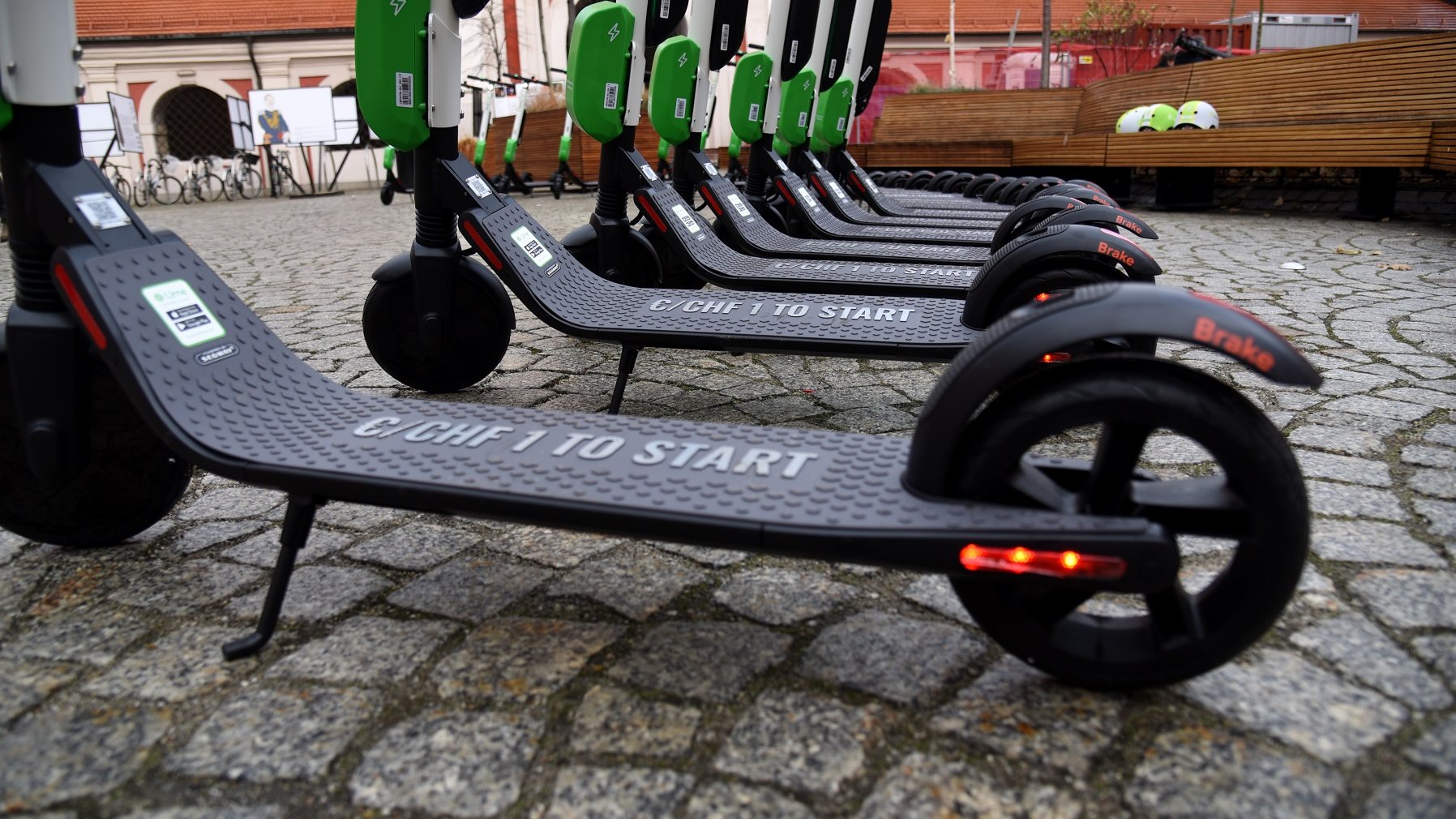New legislation for e-scooters and other personal transport devices

There are three new definitions in the revised Traffic Law - electric scooter, mobility aid (e.g., skateboard, rollerblade) injury personal transportation device (UTO - e.g., segway, electric skateboard).
Electric scooter
A driver of an electric scooter is obliged to use the roadway for bicycles or the lane for bicycles, if they are designated for the direction in which he/she is moving or intends to turn - with a speed limit of 20 km/h. Additionally, they are obliged to use the carriageway on which vehicle traffic is allowed at a speed of no more than 30 km/h, if there is no separate road for bicycles or a bicycle lane - at a speed of 20 km/h. Exceptionally, may ride on the sidewalk, when it is located along the roadway on which vehicle traffic is allowed at a speed greater than 30 km/h and there is no separate roadway for bicycles and a lane for bicycle traffic - while observing the following rules: driving at a speed close to the speed of the pedestrian, exercising special caution, giving way to the pedestrian and not obstructing the pedestrian.
In order to drive an electric scooter by persons between 10 and 18 years of age it will be required to have the same qualifications as in case of driving a bicycle, i.e. bicycle card or driving license category AM, A1, B1 or T. For those over 18 years of age, such a document is not required.
It is prohibited for a child under 10 years of age to ride an electric scooter on a public road, even if accompanied by an adult. Children under 10 years of age will only be allowed to ride an electric scooter in a residential zone, but only when accompanied by an adult.
Personal Transport Equipment - UTO
A personal transportation device is an electrically powered vehicle, without a seat or pedals, that is designed to be driven solely by the driver on the vehicle (e.g., electric skateboard, electric self-balancing device).
The driver of a personal transport device is obliged to use the road for bicycles, if it is designated for the direction in which he is moving or intends to turn - at a speed of 20 km/h allowed. He or she may exceptionally ride on a sidewalk or pedestrian road, if there is no bicycle path, while observing the following rules: driving at a speed close to that of the pedestrian, exercising special caution, giving way to the pedestrian and not obstructing the pedestrian's movement.
Traffic-assistive devices
This is a device or piece of sports and recreational equipment designed to move in an upright position, powered by muscular force (e.g. roller skates, roller skates, skateboard). A person using this type of equipment will be able to ride on a bicycle path (with no speed limit) or on a sidewalk and pedestrian way, subject to the following rules: riding at a speed close to that of a pedestrian, exercising extreme caution and giving way to pedestrians.
Riding a muscle-powered assisted mobility device does not require any license and is allowed without age restrictions.
Electric scooters cannot be parked everywhere
The act imposes an obligation to leave the electric scooter on the sidewalk in a designated place (designated by the road manager). In the absence of such a place, leaving the vehicle on the sidewalk will be possible only if the following conditions are met at the same time:
- the electric scooter will be placed as close as possible to the outer edge of the sidewalk, furthest from the roadway,
- The electric scooter will be positioned parallel to the edge of the sidewalk,
- the width of the sidewalk left for pedestrian traffic is such that it will not impede their movement and is not less than 1.5 m.
Scooters and UTOs in Poznan
In Poznan, no changes in traffic organization in relation to the new regulations are expected in the near future. At least until further analysis of the actual situation after the change in the regulations, the Municipal Traffic Engineer does not foresee prohibitions on entry of scooters in specific areas of the city or other restrictions on their movement.
However, the issue of consequences of new regulations on electric scooters and UTOs for the organisation and safety of traffic in the city will be the subject of further analysis and cooperation between MIR and the Municipal Road Administration in Poznan, the Police, and the Poznan Municipal Police. This concerns, among others, the legitimacy and possibility of designating special parking spaces. In terms of removing improperly parked scooters from the road lane, the Municipal Road Administration will commission these works to companies that provide vehicle towing service for the Authority. Towed scooters will be stored on parking lots where other vehicles towed from the lane are parked today. Instructions for towing will be issued, as in the case of other vehicles, by the Poznan Municipal Police or the Police.
Last August, the City of Poznan signed an agreement with e-scooter operators regarding cooperation in the development of alternative transportation systems in the city of Poznan. The agreement obliges operators, among others, to control the correct parking of scooters and remove incorrectly parked and damaged equipment from public areas.
See more

Poznań-Szombathely exchange as part of the City-to-City Exchange project

Open lecture: "Eighteenth-Century Literary Celebrity and Adaptation in the Twenty-First Century: A...

Next Fest packed with musical treats!
